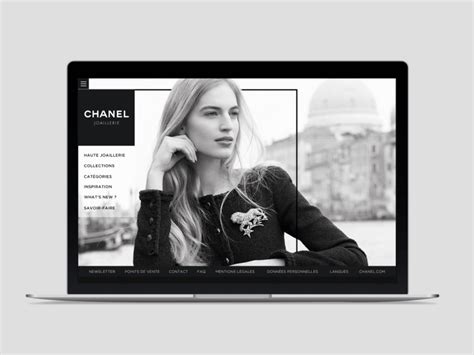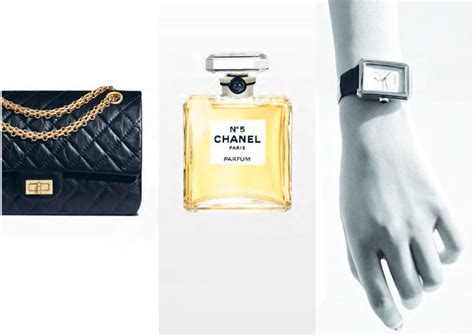chanel stakeholders | chanel business model chanel stakeholders with Chanel’s stakeholders. Chanel employees, as well as its partners, suppliers and peers all have a role to play in advancing this progress. Chanel continues to look ahead, towards innovations in materials, products and systems that will accelerate progress to a more .
$21.60
0 · chanel website
1 · chanel society
2 · chanel report to society
3 · chanel report
4 · chanel company
5 · chanel buys its own company
6 · chanel business model
7 · chanel business examples
$5,193.00
We want to share in more detail how CHANEL operates, the commitments we have made as a company, and how we collaborate with civil society, with external stakeholders, and with other brands on sustainability issues.with Chanel’s stakeholders. Chanel employees, as well as its partners, suppliers and peers all have a role to play in advancing this progress. Chanel continues to look ahead, towards inno.Chanel is a privately held company owned by Alain and Gerard Wertheimer, grandsons of Pierre Wertheimer, who was an early business partner of Coco Chanel. Its products cover clothes, fragrances.This report is CHANEL’s first step in a commitment to sharing more with stakeholders in the coming years. We see this engagement as the very best way for us to fulfill our obligations to society, and to be exemplary in the luxury industry.
In Grandis, Chanel has bought a 34% stake. The company has twelve workshops in Frances specialized in tailoring, flou, lingerie, swimwear .with Chanel’s stakeholders. Chanel employees, as well as its partners, suppliers and peers all have a role to play in advancing this progress. Chanel continues to look ahead, towards innovations in materials, products and systems that will accelerate progress to a more .
In this article, we will do a PESTEL Analysis of Chanel. A PESTEL analysis is a strategic management framework used to examine the external macro-environmental factors that can impact an organization or industry. Chanel’s supply chain acquisitions now total 41, up from only a dozen a decade ago, and employ 6,600 people. While these suppliers have a key role in helping Chanel flex its craftsmanship muscle at runway shows, they .

We want to share in more detail how CHANEL operates, the commitments we have made as a company, and how we collaborate with civil society, with external stakeholders, and with other brands on sustainability issues.Chanel is a privately held company owned by Alain and Gerard Wertheimer, grandsons of Pierre Wertheimer, who was an early business partner of Coco Chanel. Its products cover clothes, fragrances.This report is CHANEL’s first step in a commitment to sharing more with stakeholders in the coming years. We see this engagement as the very best way for us to fulfill our obligations to society, and to be exemplary in the luxury industry.
In Grandis, Chanel has bought a 34% stake. The company has twelve workshops in Frances specialized in tailoring, flou, lingerie, swimwear and leather. The three acquisitions represent an investment of 169 million dollars, according to WWD.with Chanel’s stakeholders. Chanel employees, as well as its partners, suppliers and peers all have a role to play in advancing this progress. Chanel continues to look ahead, towards innovations in materials, products and systems that will .In this article, we will do a PESTEL Analysis of Chanel. A PESTEL analysis is a strategic management framework used to examine the external macro-environmental factors that can impact an organization or industry.
Chanel’s supply chain acquisitions now total 41, up from only a dozen a decade ago, and employ 6,600 people. While these suppliers have a key role in helping Chanel flex its craftsmanship muscle at runway shows, they also increasingly play a part in producing commercial products.Chanel continued to build its partnerships with stakeholders and industry peers including the University of Cambridge Institute for Sustainability Leadership (CISL), RE100, The Fashion Pact, the Centre Scientifique de Monaco, and École Normale Supérieure (ENS), to advance research

We want to share in more detail how CHANEL operates, the commitments we have made as a company, and how we collaborate with civil society, with external stakeholders, and with other brands on sustainability issues. This report is a first insight into who we are and how we operate.
The Board has ten members comprised of Presidents of the Chanel Brand Owners and Licensee, the Global Chief Financial Officer and four independent non-executive directors. The Board meets four times a year and ensures that it is properly prepared through various updates received in between meetings as well as receiptWe want to share in more detail how CHANEL operates, the commitments we have made as a company, and how we collaborate with civil society, with external stakeholders, and with other brands on sustainability issues.Chanel is a privately held company owned by Alain and Gerard Wertheimer, grandsons of Pierre Wertheimer, who was an early business partner of Coco Chanel. Its products cover clothes, fragrances.
chanel website
This report is CHANEL’s first step in a commitment to sharing more with stakeholders in the coming years. We see this engagement as the very best way for us to fulfill our obligations to society, and to be exemplary in the luxury industry.
In Grandis, Chanel has bought a 34% stake. The company has twelve workshops in Frances specialized in tailoring, flou, lingerie, swimwear and leather. The three acquisitions represent an investment of 169 million dollars, according to WWD.with Chanel’s stakeholders. Chanel employees, as well as its partners, suppliers and peers all have a role to play in advancing this progress. Chanel continues to look ahead, towards innovations in materials, products and systems that will .In this article, we will do a PESTEL Analysis of Chanel. A PESTEL analysis is a strategic management framework used to examine the external macro-environmental factors that can impact an organization or industry.
Chanel’s supply chain acquisitions now total 41, up from only a dozen a decade ago, and employ 6,600 people. While these suppliers have a key role in helping Chanel flex its craftsmanship muscle at runway shows, they also increasingly play a part in producing commercial products.
Chanel continued to build its partnerships with stakeholders and industry peers including the University of Cambridge Institute for Sustainability Leadership (CISL), RE100, The Fashion Pact, the Centre Scientifique de Monaco, and École Normale Supérieure (ENS), to advance research We want to share in more detail how CHANEL operates, the commitments we have made as a company, and how we collaborate with civil society, with external stakeholders, and with other brands on sustainability issues. This report is a first insight into who we are and how we operate.
chanel society

Other Interest Rates Daily Weekly Monthly; Bankers' Acceptances3: 1 month: V39068: V80691318: V122504: 3 month: V39071: V80691320: V122527: Prime corporate paper rate3: 1 month: V39072: V80691315: V122509: 2 month: V39073: 3 month: V39074: V80691317: V122491: Weekly effective household interest rate4: Weekly effective .
chanel stakeholders|chanel business model



























